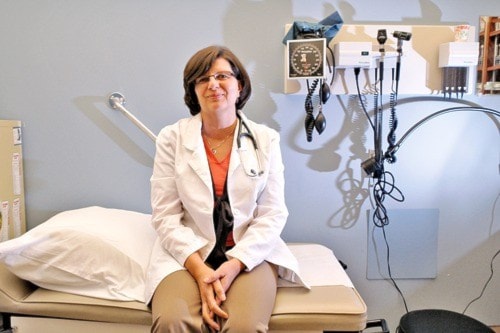Local health officials believe an expanded role for nurse practitioners in B.C. will help increase the overall efficiency of the health-care system.
New regulations will allow nurse practitioners to admit and discharge patients – working in collaboration with physicians and other health-care providers – from hospitals.
Nurse practitioners are registered nurses with additional education at the master’s degree level.
Introduced in B.C. in 2005 to help improve access to primary health-care services, their scope of practice has steadily expanded. Last May, the province announced $22.2 million to fund 190 NPs over the next three years.
Elaine Clark, a nurse practitioner who works out of the Medical Arts Centre downtown, said this change will make the system more efficient, although the bigger impacts would be in rural settings where doctors are in short supply.
Clark, one of two NPs working in Nanaimo with their salaries covered by the Vancouver Island Health Authority, works with all of the doctors at the clinic, who send her patients with chronic health issues. She also has her own patients.
The expanded role means she can admit her patients to the hospital, eliminating the need of getting a doctor to sign off on the admittance.
But what still needs to be worked out is how she would follow the patient’s progress once admitted.
Clark said the new regulations could allow NPs to take some of the load off of specialists and general physicians in a hospital setting and it could make the system more streamlined for patients in the community as well.
For example, an NP working in seniors health who is on a home visit could save an ailing senior a long wait in the emergency department by directly admitting them to hospital.
“I don’t think you’re going to see NPs admitting willy nilly,” said Clark. “I can’t see this working well unless NPs are working with the whole health-care team.”
Joanne Maclaren, manager of professional practice for the health authority, said the new regulations allow for better patient flow through hospitals, including more timely discharge because with physician workloads and hours, this does not always happen as soon as it could.
With just two NPs in Nanaimo, she doesn’t see huge impacts for the city, but that could change.
“I’m thinking there likely will be an increase in nurse practitioners in the Nanaimo area,” said Maclaren.
Jo Taylor, chairwoman of the Pacific Rim branch of the B.C. Nurses’ Union, said the union supports this expanded role, but would also like to see the role of registered nurses expanded.
She said an RN’s ability to make simple procedural decisions in the ER like stitching up a patient with a cut would make the system more efficient as well.
Dr. Shelley Ross, president of the B.C. Medical Association, said her association is worried about accountability and liability.
“What happens if something goes wrong?” she said. “One of our concerns is that it’s not clear.”
Ross said the person with the most training should be making the decisions and when a person is admitted to hospital, different doctors and specialists are often involved.
“We’re very much in favour of working in teams,” she said.
“It’s the independent practice we’re concerned about. [NPs] want to have their own set of patients.”
